The Class-A Amplifier Site
This page was translated November 2012
Please note that when translating this article I tried to keep as close as possible to the original text, though a few changes have had to be made to ensure that the translation makes sense. Whilst reading the article, please bear in mind the following alterative meanings for some of the translated words: batch - type; saturation - onset of clipping; rate of distortion - distortion level; offset - drift; enclosure - speaker. There are others as well, some of which are close to impossible to translate accurately.
Amplifier
Class A, 8 Watts
"Le monstre"
Jean Hiraga
(l'Audiophile No. 27)
At the end of 1979, the high-end of high fidelity as regards amplifiers concerned, of good part, the amplifiers with direct coupling, the assemblies in pseudo class A as well as the ultra-powerful amplifiers, for which one confused sometimes quality and quantity. What did not prevent thousands of amateurs from being satisfied with 5 with 30 Watts, in the form of amplifiers with tubes or transistors, of a particularly high level of quality. Most these amateurs had understood, through disappointments, of experiments, of comparison tests, that quality took precedence over the quantity. They even had noticed, put except for "musical Watts" and the exaggerations printed on certain publicities, a curious fact. They had the clear feeling which there existed "Watts more powerful than others"
Le Monstre (The Monster) I-08
Thus in October 1979, within the framework of the Audio-Fair of Tokyo, an exhibitor presented an enormous device, a prototype of amplifier, which unfortunately never comes out. Considering its size, its weight, its transformer of 1,200 GOES, its source with regulation "shunt" for each stage, it N could have acted that of an amplifier of very great power. 2 X 300 Watts? 2 X.500 Watts? Moreover, this prototype was baptised "The Monster" (the Monster), a well deserved name. But there was something of very abnormal. It was the sign placed in front of the "Monster", which indicated "Amplifying will monaura, L nominal nominal output 8 Watts, pure class A". What to very satisfy the audiophiles impassioned by Watt with top quality, "very-powerful" Watt. Already, by 1958, the English firm Quad showed that 15 Watts (amplifier Quad II) were enough for "driver" the famous loudspeaker electrostatic ESL, whose output did not exceed 87 dB per Watt. Here also, the exhibitor in question was the firm Stax Industries Co. Ltd, famous for the quality of its loudspeakers and its electrostatic helmets and also of its amplifiers. With this prototype, Stax proved that very-powerful Watt ")", that Watt "very-transparency", of a quality exceeding the majority of the best achievements with tubes, existed. However, as regards tube amplifiers, that can be said infull knowledge of the facts.
Experiences and Philosophy
Let us think, for example, that a fairly "bitten" Japanese amateur assembles himself easily, in a few years of tens of tube amplifiers, with hundreds of alternatives. The old three-electrode tubes are known by each one of them in an integral way, in particular for qualities and defects subjectifs : "roundness" of the tube 2A3, "smoothness" and "excavated" of tubes PX4, PP3/250, AD1 or VT52, power, dynamics, quality of the medium, musical quality of the 300H, without speaking of the influence of the transformers of exit, a point determining principal qualities, the possible defects, colourings or limits of an amplifier. Without also speaking about tens of assembled achievements sold or in kit by small specialised stores and of good about fifteen manufacturers of tube amplifiers of high-end. It is understood that under these conditions, the competition is hard, the amateurs are informed. There would be no question of speaking, in advertising or different form, of the "best amplifier of the world", without having of them real evidence, exaggerations which one unfortunately rather often meets in the world of high fidelity. To believe is not enough. It is current besides that the senior audiophile knows a device better than the manufacturer himself, which always does not have time nor the means of carrying out very long tests, many comparative listenings. To return from there to our " Monster ", the stand Stax Industries which exposed this prototype, was not satisfied with a static prototype, a model unable to function or a photograph. Parallel to the Audio-Fair, often called "Noise Fair" because of sound ambient noise of 90 dB on average, which made obviously a listening serious impossible, permanent listenings of the "I-08" were organised in the auditorium of the Stax firm, located in the district of Ikébukuro (northern of Tokyo). Each one knows that for good "driver" of large electrostatic of the kind Stax ESS-6A, ELS 6A, of the old models like the KLH, the more recent models like Dayton-Wright, of the models combined like the "double panels Quad", one recommends, by experiment, of the particularly stable amplifiers, supporting well the capacitive or complex loads, the rises and falls of impedance lain sometimes between 1ohm and 20ohm. Since strong a long time, Stax had been baited to seek, even to produce in experiments amplifiers adapting well to their large electrostatic panels: amplifiers has tubes O.T.L. (Technics 20A, Luxman, Futterman), tube amplifiers studied by Stax (Stax AM6, OTL, amplifiers with direct coupling working under high voltage (8 Kv). Consumption sector was such as some visitors perhaps remember that with each sound attack, each note, on the percussions or even on the acoustic guitar, one could see the lamps of 'auditorium darkening. As the readers know it, Stax designed an amplifier later pure class A, of 2 X 150W, the DA 300, studied especially for good to adapt to their enclosures.
At the stage amateur, one knew that there existed in circuits with tubes as with transistors, of the not very powerful assemblies but of a sound quality incomparable, able to get a sound width, a behaviour in the low register worthy of amplifiers ten times more powerful. Already, around 1976, one could listen in researchers as Mr. Akiba (who built the preamplifiers of Orthospectrum high-end), at Mr. Hata (Realon firm) of the amplifiers of about fifteen Watts only getting, with the panels Quad ESL of the results reaching the limit of the incredible one almost. However, they were simple diagrams: ten transistors in a case (by channel), four tubes in the other. But, in both cases, one found there common points with the policy, the circuits described since 1977 in Audiophile: oversize source, transformer oversize mains and exit, component "audio" selected: condensers, son of wiring, resistances, connectors, supports. The circuit of Mr. Akiba comprised in particular transistors of power of the type RET (Ring Emitter Transistor) learnedly used. This researcher had quickly understood that it was by far preferable to be satisfied with 14 or 15 Watts if one managed to obtain exceptional performances. Mr. Hata also with his four tubes, including two tubes of exit 6RA8 (three-electrode tubes, stitching noval, Japanese origin, whose manufacturing was stopped in 1973), his transformer of exit of 150 W, his source of 2,200 uF under 380 V, obtained a dynamics such as, even on low level, to the attacks of chords, the white vibration of a flute, were enough so that one feels his ears to be saturated on these impulses. The small ESL became unrecognizable about it so much they were dynamic, clear, broad so much so that their directing effect became subjectively much less marked about it. The small ESL became unrecognizable about it so much they were dynamic, clear, broad so much so that their directing effect became subjectively much less marked about it. Even at low level, these electrostatic panels were able "to fill" a part, in a surprisingly homogeneous way.
As one thinks it, the listening of a pair of I-08 was a "voyage" which one is not ready to forget. How to explain, first of all, why two amplifiers monaurals, of nominal nominal output 8 Watts, as "monstrous" as they are, can be able to produce a valid result, between 0 and 8 W with loudspeakers of low output. Especially when they are of electrostatic type large-sized (Stax ELS 6A), that they must normally be coupled to amplifiers of a power minimum from 50 to 100 Watts. An amplifier OTL with tubes, could not give him, by experiment of good performances below 30 Watts. in spite of the advantage of employing only few tubes of exit assembled in parallel. A good class A changed the things, though comparatively, 2 X 15 W of our friend Mr. Akiba was higher than a Kanéda assembly in class A of power 2 X 30 W, in spite of undeniable qualities of this last. Another exception: the well-known amplifier classifies A 2 X 20 W of which it is often question in these pages, for which the various demonstrations carried out up to now quickly proved that there existed, subjectively speaking, a new notion of "Watts", as absurdity as that can appear. How to dispute lived experiments of an amplifier of 2 X 20 Watts which is subjectively more "powerful" that another of 2 X 300 Watts. How to explain that the amplifier of 2 X 300 Watts, functioning between 0 and 20 Watts, therefore largely below its possibilities, with the little requested fuel systems, can appear less dynamic, less "powerful" that another amplifier of only 2 X 20 Watts, working between 0 and 20 Watts, with the limits of its possibilities.
This "I-08" was unfortunately too heavy, too little "powerful", too expensive to make a valid commercial product of it. It is to say how much this notion of Watt very top quality, of very high definition, remains things difficult "to swallow" by the majority of the public. Extremely fortunately, some good examples took up this challenge, like imposing Mark Levin his ML-2, whose power does not exceed 25 Watts. But the goal is not here to speak in praise of a Japanese prototype, as good as it is. Essence is to have understood the philiosophie which is released some, the policy to be followed, that having to lead to a precise result, predetermined, even if this result must be the fruit of a hard work. Also let us understand that the fact of leading to an amplifier of small power is not a quality in oneself, that it is not either one of the goals required. It is, with great regret the only parameter which one very often sees obliged to sacrifice to preserve others of them. The best example is that of an amplifier working either in class B, or in pure class A, the loss of power, the profit in quality in the second case being at the same time advantages and disadvantages.
Some references
Without claiming to praise itself some, the amplifier classifies A 20 W + 20 W must be taken as one of the references, considering which he was already studied with a same aim. It is based on an original but simple and very powerful diagram as regards subjective quality.
It has the enormous advantage of being of an absolute stability on capacitive, inductive or complex load. Advantages coming of good part of the design from the stage of exit, the source storing an enormous reserve of energy.
But it would be ungrateful to hide with the readers the fact that there exist different good references which will be able to thus serve as "foundations" with the present project. Between 5 and 20 W, no reference commercial can be retained, which confirms the remark passed before. Some esoteric products must however hold the attention. On the other hand, on the level as of achievements amateur, the choice is vaster. One notes, for example very particular assemblies, without negative feedback, based on the principle "anti-distortion" (correct of linearity of transfer, linearity of Hfe, etc) studied by some Japanese and also by Dr. Brian Elliott (Hewlett Packard), which had already published in the newspaper of HAVE amplifying assemblies whose rate of distortion was neighbourly 0,000001%. Assemblies very attracting but too unfortunately much complex. Much less powerful, but also much more simples : some circuits designed by Mr. Yasui (a "rival" of Kanéda), published partly in the Stereo review Technic (of which it is referred rather often in these pages). One of its diagrams, of power 30 W using of the transistors of Mos-Fet exit is enough fascinant : it is the only one which arrives rather well has to control the problem of the distortion on "the level" (constant distortion in a certain margin of power, increasing beyond and decreasing in-decaf), a disadvantage that one meets "automatically" on the stages of Mos-Fet exit. Thanks to a stage driver of the type cascode Mr. Yasui almost obtains a characteristic of regularly rising distortion, "soft".
But there too, one meets there, by testing this assembly, a defect of instability on capacitive load, due partly to unnecessarily powerful active components. The assembly Kanéda 30 W + 30 W is to be retained, in spite of the remark passed herebefore. Provided with a different source, it represents a good compromise.
"Too well" fed, the sound becomes too much "tended", a little too "chechmate", though alive, but with a certain lack of specific opening to some small tube amplifiers. On the side amplifiers to tubes of small power, the choice becomes broader. The majority are assemblies on two floors provided with a triode of power. On the other hand, even in simple assembly stages, the pentodes and tetrodes are clearly below "acceptable minimum", in particular so in limit with a tube can, easy to get but limited a level of the subjective performances: tube KT88 or 6550.
It would be useless to reconsider this issue already covered in Audiophile, to stink an assembly monotube, the limit being located at the neighbourhoods of the assembly describes in the n0 14. But with such a tube, it would be completely stupid to believe that, for a reason or another, it would be possible to make a true "jewel of it", a diamond. Any amateur having had experience of hundreds of assembly, using several tens of tubes, transformers of exit French, English, American and Japanese would answer such a matter "that a pan, even manufactured by the houses "Pyrex" or "the Crucible" will remain always a pan. "
It would be to deny the thousands of experiments completely, several hundreds of articles published on more than fifty years on the triodes, to deny the immediately verifiable performances which obtain nearly 30,000 Japanese amateurs of triodes with direct heating.
While taking as an example, of the small triodes of power built between 1930 and 1950, one can find models which, in assembly mono-lamp on two floors get, without any negative feedback, of the musical stamps of a remarkable truth, a harmonic wealth and a feeling of space, of freedom astonishing. The best of these triodes is perhaps not known readers, because very old. It acts, to take preferred, of first version RE604 Telefunken going back to 1930, of the PX4 and its equivalents (4PX, PP3/250), of the AD1, German origin (Loewe Chose, version with radiator fixed known the plates), of the VT52, of which it was already question, (this triode being however lower in subjective quality), of the WE275A (Western Electric the U.S.A.), of the 205B (one of the oldest three-electrode tubes, manufactured in 1917, comprising a platinum grid pure) and of some others. All its tubes, of which dissipation plate ranges between 10 and 15 W make it possible to obtain in assembly mono-lamp only one power understood 2.5 and 5 W. In a successful assembly, the quality of reproduction can sometimes exceed that 99% of the best transistorised amplifiers. The best in front of thus being useful to us as bases. In the more powerful versions, let us retain the tubes 300B, DA30, PX25A, TM100, TM75, WE25A, E105B. However, as regards the veracity of the stamps. Put except for perhaps the TM100 and the 300B, it is necessary to acknowledge a loss more or less marked of quality, although compensated by an increased output power : 6 to 12 Watts out of mono-tube. One could find stupid to take for reference of the so old tubes, the majority having disappeared, which is exact. The main thing is of knowing that between a violin of 15 dollars and a Stradivarius, the difference is audible, and that one should not forsake this last under pretext which it is too old or which it is not rained manufactured.
Among the more powerful devices, Kanéda classifies A 50 W + 50 W remains a very important reference. One cannot forsake "Exclusive M-4 either", also a class A 50 W + 50 W designed by Pioneer, nor very-powerful Macintosh MC3500 (with tubes, mono block of 350 W), all remarkable in various part of the spectre : qualities of untied, infinite space, behaviour, dynamics, accuracy of stamps of Kanéda, balances, "slipped by" of M-4, low-medium and sound width of the MC3500 such as this one becomes difficult to compete on a piece of opera, on a symphony recorded in public.
To return from there to the Hiraga amplifier A 20 W classifies + 20 W, one could not disavow qualities of the unit used in broad band. On the other hand it is undeniable that to better do, it would have been necessary to add the quality of the low register to him, of the low medium of Kanéda 50 W classifies A united with those of the MC3500, apparamment contradictory. It would have also been necessary to add the smoothness of the stamps of the best three-electrode tubes to those of cleanliness, untied, accuracy of the stamps of Kanéda. That claims.
But, to go very far, it is necessary to want, it is necessary to persevere. The preamplifier Kanéda, small Sunsey Minimum, the Hiraga preamplifier with tubes (Audiophile No 21) "the Minimum preamplifier with tubes, the Hiraga pre-preamplifier, and L" amplifying Hiraga 20 W + 20 W classifies A, show that it is possible, using simple diagrams, of components carefully chosen, of going very far.
Essence being to believe that it must be possible. The result, it is this "Monster" 8 W + 8 W classifies A.
"Le Monstre"
As opposed to what its name indicates, with its effective power, its work in pure class A, it does not act of a copy, of an assembly inspired of the "Monster" I-08 de Stax. That Ci did not comprise less than 42 transistors in its section amplification, In spite of its performances, it was a too complex circuit. In a few words, it is in fact an assembly inspired of the 20 W classifies A. Before returning on this circuit, other tests, moreover always in progress, related to assemblies comprising of the exits mono-transistor, standard germanium. The power limited to 5 W, the difficulty in finding good transistors of power to germanium made that this project did not succeed yet. Other tests, which did not lead to a satisfactory result relate to several assemblies summarily described on figure 1.
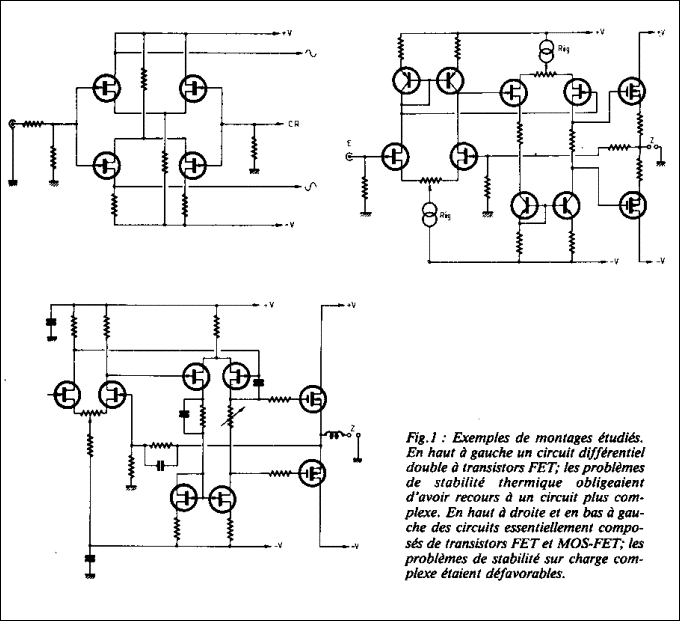
Briefly, we mainly stuck to the following points compared to the assembly classifies A 20 W well-known of the readers. Knowing, obviously, that the sacrifice as regards power authorised us a manoeuvre margin much broader.
 Input stage : even quieter transistors, high gain, but linear
Input stage : even quieter transistors, high gain, but linear
- Low leakage current input
- Input impedance higher
- Circuit to reduce the Miller effect, to reduce distortion at high frequencies
- Input stage can be overdriven without risk of saturation.
 Stage driver :
Stage driver :
- Autocompensation distortion circuit linearity
- Low output impedance
- Low distortion
- Output level higher
- Bandwidth.
 Output stage :
Output stage :
- Similar to the 20 W class A
- Choice facing other output transistors, less powerful, but superior subjective quality.
For the desired improvements on the subjective level, they have been described previously. Some seem quite contradictory but, apart from the result which proves how to proceed in the choice of different parameters shows how this is possible. Besides the unpredictable, it would be the sound of measurement. The final listening should not come as no surprise, except, perhaps, very small details.
Figure 2 shows the general circuit, where one recognizes the stage of exit "Darlingnot", in reversed Darlington. It is noted that the old combination 2SC1096/2SA634 and 2SD188/2SA627 pass to a new combination, a little less powerful but much more powerful. The choice of the drivers is at the same time subjective and objective. The value of Cob. from 75 PF on the 2SA634 passes to only 1.8 PF On the 2SB716. On the other hand, one notes a PC much weaker (only 750mW) on the new driver, value however sufficient for driver the stage of exit. The pairs of exit 2SD844 and 2SB754 are of moulded type, in new case. This complementary pair has a PC of 60W, which is sufficient for a work in class A under a modulated power of 8 with 15W. This pair can work under a tension of entry twice weaker than on the pair 2SD188/2SA627, which explains the use of a stage smaller driver. Figure 3 shows the differences existing between these transistors. To note that for a work in class A up to 20 W, these transistors could not have been appropriate. The output stage thus assembled with the 2SB7l6/2SD756 and 2SD844/2SB754 gets, compared to the 2SC1096/2SA634 and 2SDl88/2SA 627 ...
- A little less distortion between 0.1 and 3 W at high frequencies (effect Cob weaker drivers);
- Acute longer defined;
Low - medium further;
- Worse best kept (Rbb output transistors 3.2 ohm instead of 7ohm);
- More open sound (CR rate lower);
- Medium "hotter" but also detailed.
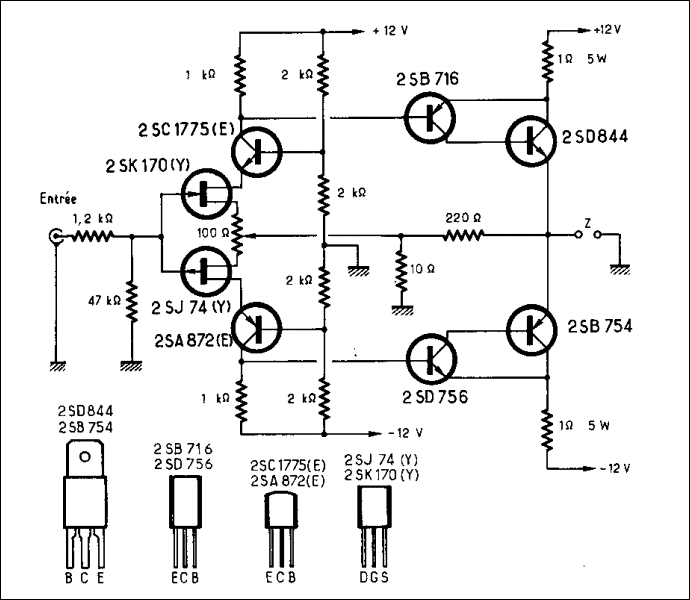
Fig. 2 : The amplifier circuit 8 watts class A
The other advantages do not change. Contrary to the current amplifiers, the power of exit does not increase when the impedance of load decreases. The characteristic power/impedance is not downward (current amplifiers) but round, as on a tube OTL amplifier. Between 7 and 20ohms variation of power is minimal and with 30ohm it is still important what favours work over high-output enclosures, the impedance of those with resonance being able to exceed 100ohm.
The circuit remains of unconditional stability, even charged by 1uF in parallel on 8ohm (see photographs). The unit makes it possible to obtain a very broad band-width (more than 4 MHz), an extremely fast boarding time (less than 0.5 customs). To note that such a performance on Mos-Fet transistors could not be also stable on capacitive load. Another advantage is the possibility of reducing the length of the connections driver/transistor of power. Approximately 18 cm out of the 20 W classify A, it is this direct time, the transistors of power being able to assemble itself directly on the printed circuit. What reduces the capacities of connection and the possible ones risks instability.
As mentioned as a preliminary, one notes that it jectif exactly in conformity with what was wished thus that the disadvantage of a power of exit limited to approximately 8 W.
As mentioned it as a preliminary, it is noted that there exist very close relations between the subjective performances and the configurations of diagram used. A systematic and rigorous work thus makes it possible to achieve the sought-after goal, with the sacrifice however of a parameter which is, in this case, the power limited around 8 W.
|
Transistors |
VCBO V |
VEBO V |
ICm A |
PC W |
HF |
VCE V |
IC A |
VCB V |
IE mA |
FT MHz |
RON ohm |
|
2SD188 |
100 |
7 |
7 |
60 |
60 |
2 |
3 |
10 |
-200 |
10 |
7.5 |
|
2SD844 |
50 |
5 |
7 |
60 |
70~240 |
1 |
1 |
5 |
-1A |
15 |
3.5 |
Fig. 3 : Comparison Chart transistors 2SD188 and 2SD844
The Input Stage
It is not at all like the one that was used on the 20 W class A.
In this circuit, the choice of the stage of entry was paramount. As curious as that can appear, it was a question of finding here a its close relation of a tube driver considered in Japan for its subjectives qualities;: the WE310A, a tube pentode absolutely remarkable on the voice, the guitar, the piano, in short exceptional in band 200 - 5.000Hz. The use of bipolar transistors can produce distortion by odd harmonics easily while a pair complementary to field effect will produce a little too much odd harmonics (its hard and unpleasant, which explains summarily figure 4. In the case of the circuit of the 20 W, the compromise consisted in very using bipolar transistors of subjective good quality, the 2SA872 (E) and 2SC1775 (E) whose assembly got a rate of distortion more raised, but a range in harmonic distortion particularly good. Besides the second stage attacked the driver in extreme cases of saturation, which did not pose fortunately too much problem, after the various adjustments (see n0 15) and fitting of the supply voltage with + 21V.
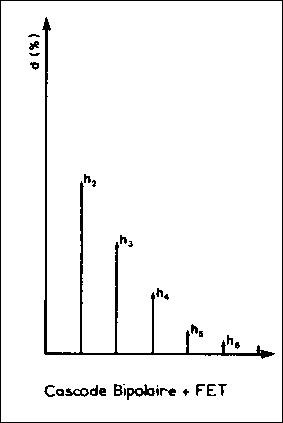
Fig. 4 (a) : Distortion Spectrum With Cascode FET-Bipolar.

Fig. 4 (b) : Distortion Spectrum with a Pair of Complementary FETs.
The Id/Vds characteristics of a field-effect transistor being of the same configuration than those of a three-electrode tube on the one hand, the characteristics of spectrum of distortion of a tube 310A not resembling completely those of a bipolar transistor on the other hand, a combined assembly of transistors will simultaneously bring what one seeks.
- Low output impedance;
- Very high gain;
- Low distortion;
- Low leakage current input;
- Circuit with very low Miller effect;
- Saturation level of the input high.
It is about a complementary pair cascode "mixed" FET/bipolaire for which the choice of the transistors will be made meticulously, in order to obtain resulted them wished.
Without this complementary assembly cascode, these results could not have been obtained in another way.
The assembly cascode indeed allows obtaining a very high profit and the risks of instability, in the case of this assembly are practically non-existent. In the case of three-electrode tubes with great profit, it would undoubtedly not have been the case. Then, the FET/bipolaire combination produces a characteristic combined near to a tube pentode. What is equivalent to a spectrum of distortion with prevalence of odd harmonics. This is voluntary, considering the assembly into push-pull will be given the responsibility to reduce those from where an overall combination having to produce a good performance.
An assembly cascode of this type, to exit low impedance will make the desired subjective improvements, i.e. more width in the low-medium, but also a serious farm and held well (due also to the fuel systems). But its decisive advantage will be an important profit in transparency. But obtaining these results depends closely on the choice of the transistors. A condition obligatoire : to use as starter a field-effect transistor in very high Gm, 20 to 30 times higher than that of a Fet transistor of the 2SK30AGR kind. Employee alone, this kind of transistor, for very weak noise could not agree that for pre-preamplifiers and preamplifiers. Only, Fet employed here, the complementary pair 2SKl7O/2SJ74 whose two only advantages have a very weak noise.
(en = 0,9 nV/√Hz)
and high Gm: 2.2 mmho. But the defects of these transistors are numerous:
- Gate leakage current major (loss of sonic transparency);
- Parasitic capacitance Ciss and HSRC (inlet and return) key: 30 pF and 6 pF (instead of 8 and 2 pF about the safe 2SK30AGR);
- Gate leakage current increases very rapidly when the working voltage Vds increases;
- Input voltage saturation very low, due to the high gain (about 0.2 V).
Mounting cascode significantly improves these characteristics. We could get cascode transistors F., as shown in Figure 5 (a) but the combination bipolar NPN / N-channel Fet is preferable (b). The advantages are:
- Significant reduction in parasitic capacitance CRSS (ability to "return" drain-gate) which passes to 1/10th of its initial value, or 0.06 pF pF instead of 6, a significant reduction of the Miller effect (Figure 6);
- Lowering the working voltage Vds (the assembly being in series), consequent reduction IGX (gate leakage current), as shown in Figure 7 e.
- Saturation level higher input (about 1V year instead of 0.2 V).
Figure 8 shows schematically the input circuit and the electrical equivalent.

Fig. 5 : Mounts cascode.
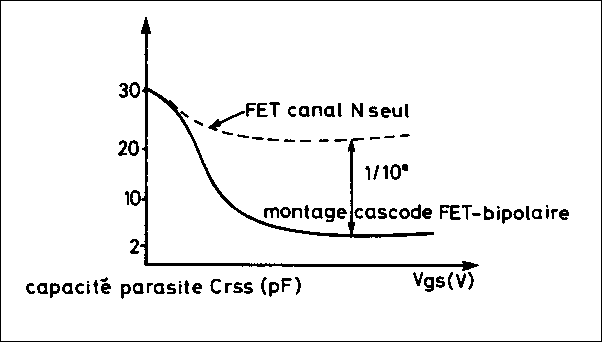
Fig. 6 : Reduction of the Miller effect, through the use of cascode
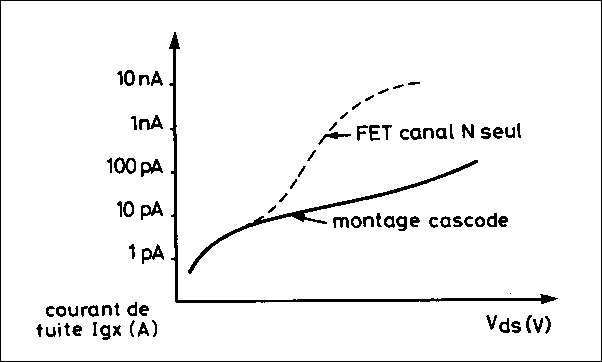
Fig. 7 : Reduction of leakage current IGX by the use of cascode,
compared to that of a single FET.,
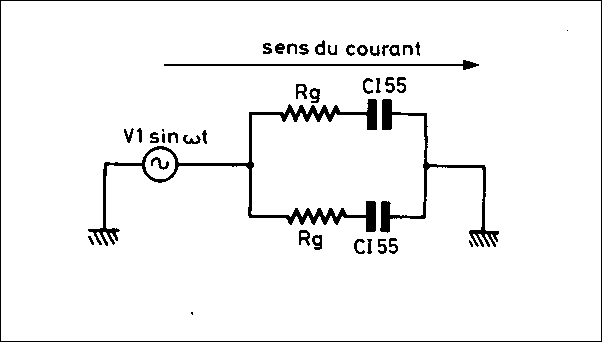
Fig. 8 (a) : Electrical Equivalent of Complementary Cascode.
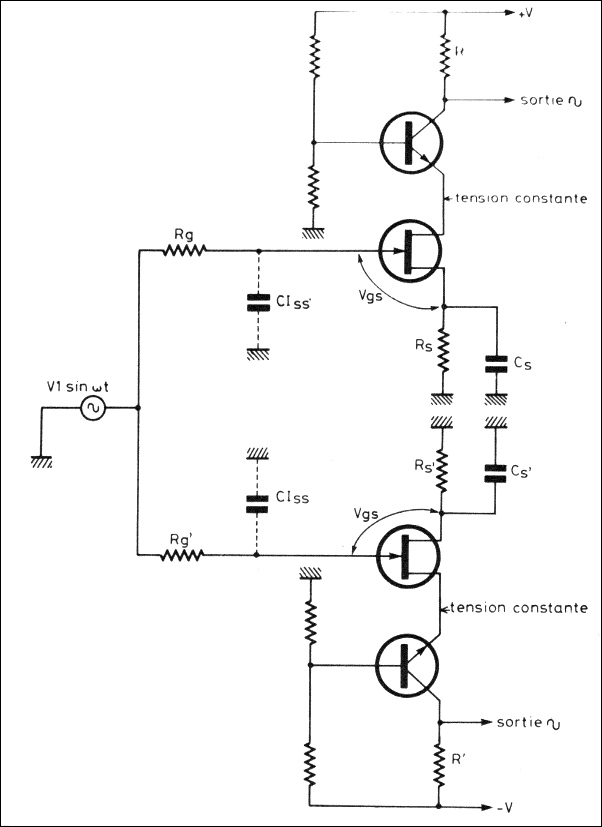
Fig. 8 (b) : Complementary Cascode Circuit.
This assembly was shown, in addition, more interesting than a transistor FET standard assembled with current regulator : less gain, raised output impedance, loss of subjective dynamics, effect of the output capacitance on the distortion.
In this assembly, input impedance, which is high is charged by 47 kohm and a resistance of stop of 1.2 kohm is assembled in series in the input circuit. The complementary circuit cascode is charged by only 47 kohm, the current being about 0.9 with I my. The bases are polarised by four resistances of 2 kohm and the various tests of regulation (diodes zeners) were lower than listening. The choice of the combination 2SK170-2SJ74/2SC1775-2SA872 was still carried out on subjective criteria, in function, of course, total result.
In the next number, the assembly and other possible adjustments will be detailed, as well as the imposing source of + 14 V, on lead-acid battery assembled out of plug. The reader will on the other hand find on figure 10 the printed circuit of this assembly.
Measurement and listening
This circuit was carefully developed, with measurement as with listening, in April 1982. It "had been put on side" for a question of transistors whose choice produced a result exceeding even the forecasts, as regards I listen but who is still very difficult to get on the Japanese market. The pair 2SD844/2B754 was particularly difficult to find, Hfe not corresponding to the values desired, This Hfe, of 60 on the 2SA627/2SD188 here is understood according to the batches (K, L, M, NR, O) between 70 and 240 and only the batches K and L (2SD844K and 2SB754L) can be appropriate. As for the 2SK170/2SJ74, they are transistors still rather difficult to find, because recent and manufactured only in small series by the Toshiba firm.
For listening, whose result also depends on the source, one arrives at curious but astonishing compromise three-electrode tubes/amplifying Hiraga 20 W classifies A, where only the output power represents a small shade on the table of performances. As a whole, one obtains a particularly definite sound, aired, sounds of reverberation, freer echoes, whereas the direct sounds even more present, are stamped better and more "hot". The paradox is in the low register which, with the imposing source, can finally be compared with that of the Kanéda amplifiers classifies A 30 W and 50 W: exceptional firmness, superposition of extremely firm sounds on infinitely soft and light sound. Superposition of infinitely vague sounds on sounds with finely engraved contours.
Even on systems of average output, this amplifier behaved very well, the impression equivalent of space, reserve of power normally being able to be obtained only with rare amplifiers referred to above.
Baptised "the Monster", because of its abnormally large size compared to its output power, it could still have been baptised "Memory Tube", because of its specific stamp to some rare three-electrode tube amplifiers which were used up to now in assemblies called "to very high definition". This device will find its niche ideal in low-medium, medium or in the acute one, systems biamplified, sorting or quadri.
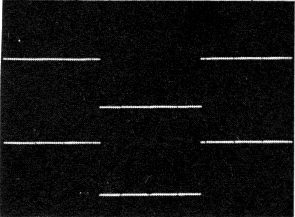
Fig. 9 (a) : Response of 20Hz square signal. Above,
output amplifier, low generator output.,
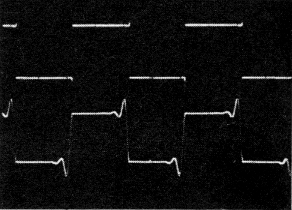
Fig. 9 (b) : Response of 20 kHz square wave signal on
capacitive load, 0.47 uF in parallel 8 ohm.
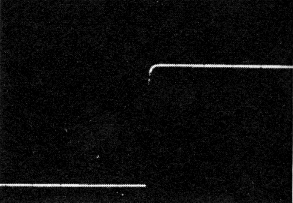
Fig. 9 (c) : Allure rising edge at 10 kHz. Time
rise is less than 0.5 uS. It is difficult
measured with the tester who stay employed.
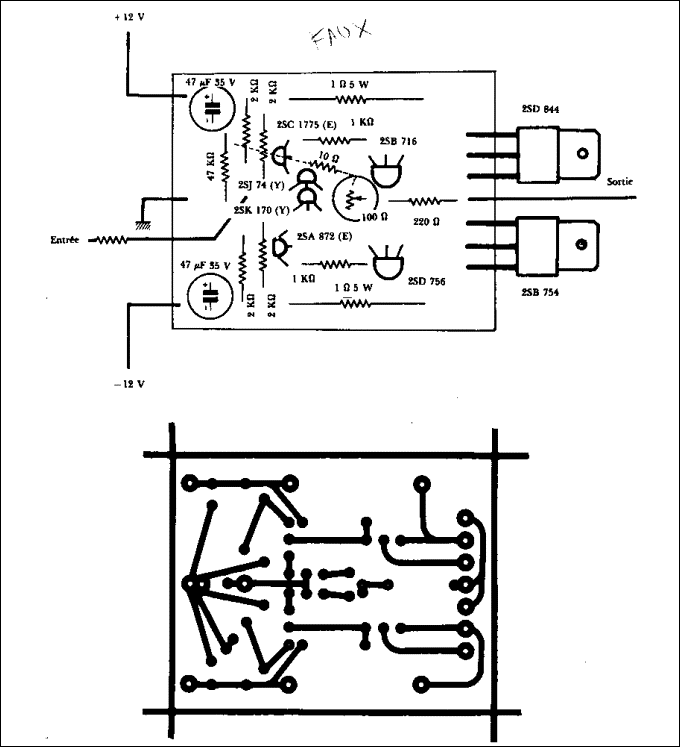
Fig. 10 : PCB and implementation
HISTORY: Page created 15/11/2012